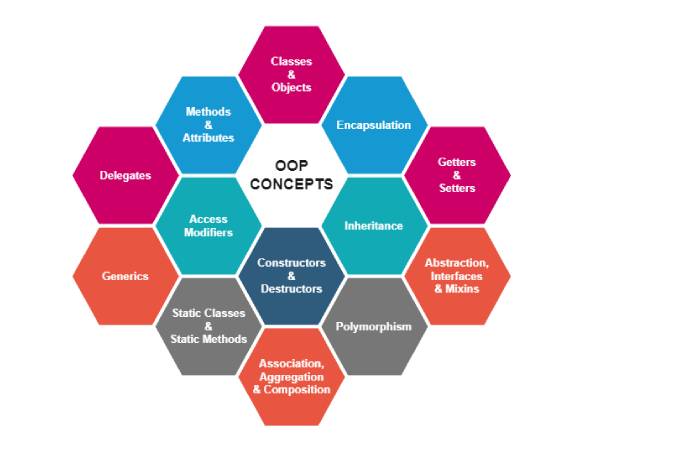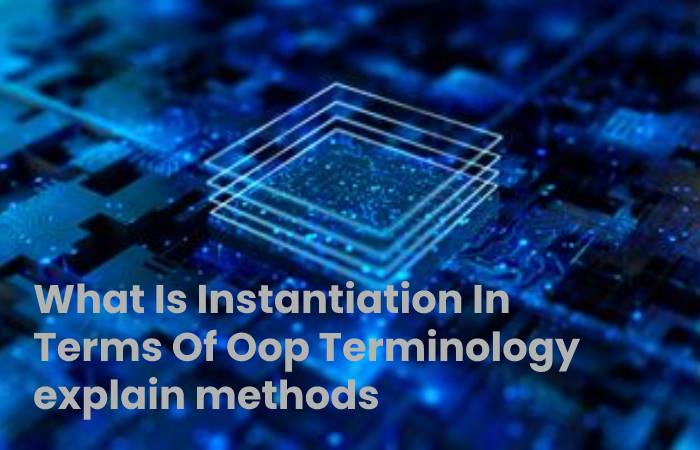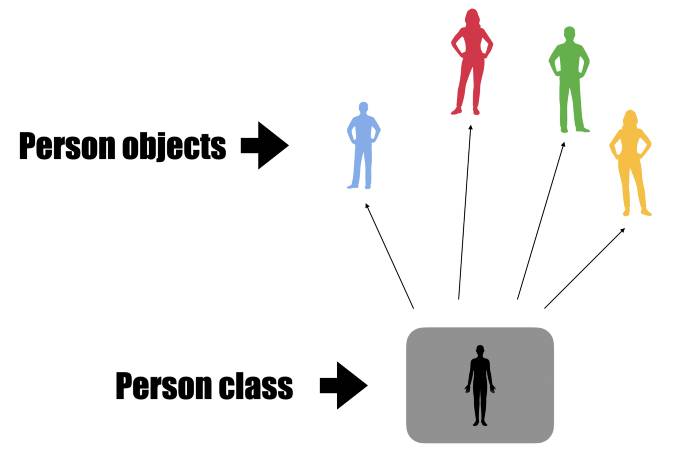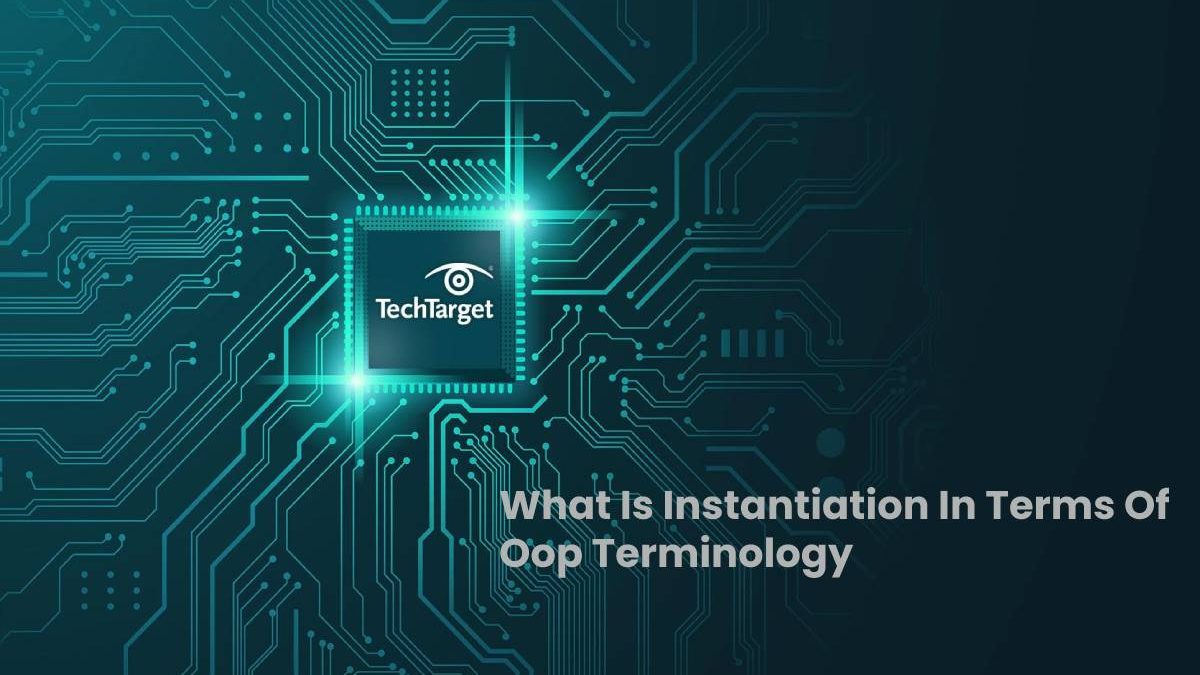Table of Contents
Introduction:
What Is Instantiation In Terms Of Oop Terminology in Objective-C Class: defines the grouping of data and code type of entity Object or Instance: a specific instantiation of a class with its own state (class variables values) Method: a “function/operator” that an object knows how to perform Instance Variable: this is what we call class variable in other OOP languages Deleting an instance of class Modifying an instance of class Copying an instance of class Creating an instance of class. Python Objective-type Questions and Answers.
The potential confusion for people new to OO is that Instantiation is what happens to create an object, yet this is a class-to-class relationship no objects are involved. A parameterized class cannot have objects instantiated from it unless it is first instantiated itself (hence the confusing name for this type of relationship).
Instantiation is creating an instance of an object in an object-oriented software design (OOP) verbal. An instantiated object is given a name and is created in memory or on disk using the structure described in a class declaration.

In computation, sampling is the realization of a predefined object. In OOP (Object Oriented Programming) an object class can be defined. All items of this class have a certain set of properties (related variables), props (ways to access these variables), and methods (functions). An instance of this object can then be declared and given a unique named ID so it can be used in the program.
The term Instantiation is used in OOP ( Object Oriented Programming ) . In OOP , the programmer has to organize the program code as a class . A class is a blue print for defining the object . Each class defines the data and the methods which are authorized to operate on that data ( Encapsulation ) . So Class is a design time entity .
The members that are associated with objects are called instance members. Inheritance One important characteristic of object-oriented languages is inheritance.
WhatIs.com. Contributor(s): John MacLeod. In programming, Instantiation is the creation of an actual instance or specific implementation of an abstraction or template, such as an object class or computer process. Instance is to create such an instance, for example, by identifying a particular variation of an object within a class, giving it a name, and placing it in a physical location.
Which Of The Following Is Hardly Ever Used In Object-Oriented Programming?
In Object Oriented Programming, what is another name for the “attributes” of an object? What Is Instantiation In Terms Of Oop Terminology not methods, forms, or messages Python looks at the definition of throughout the creation of a new object to describe the structure and capabilities of the newly created object.
Object Oriented Programming (OOP) is a programming language model organized around objects instead of “actions” and data instead of logic. Historically, a program has been watched as a logical procedure that takes input data, processes it, and produces output data.
Welcome to a brand new test on object-oriented programming. The OOP programming paradigm has changed the way programmers look at problems. This programming paradigm focuses primarily on “objects” rather than functions, making it very powerful for solving real-world problems. This questionnaire consists of a maximum of twenty questions from the same concepts. Let’s start.
In object-oriented programming (OOP), a method is a message and a procedure associated with an object. An object consists of data and behavior; they contain an interface that specifies how the thing can be use by any of its various consumers.
In class-based object-oriented programming, a constructor (short: ctor) is a particular type of subroutine called to create an object. It usually prepares the new thing for use by accepting the constructor’s arguments to set the required member variables.
Object-oriented programming that uses classes is called class-based programming; prototype-based programming usually does not use categories. As a result, significantly different but similar terminology is used to describe the concepts of object and instance.
It is a list of notable programming languages with object-oriented programming (OOP) features, which are also listed under Category: Object-oriented programming languages. In some contexts, the definition of “object-oriented programming language” is not the same as that of “programming language with object-oriented functions.”
What Is Instantiation In Terms Of Oop Terminology explain methods.

Describe the desired attributes of an object. An object must instantiate a well-defined style. When using an object, the following features must be provided. Modularity: What Is Instantiation In Terms Of Oop Terminology For each module of the software project, operations/methods must be define separately. One of the object’s properties can be use by another entity as a reusable component.
The object class is include in Java. Lang package. Every category in Java derives directly or indirectly from the Object class. For example, if a class does not extend another class, it is a direct subclass of that object, and if it extends another class, it is derive indirectly. Therefore, the methods of the Object class are available to all Java classes.
Object class in Java. The Object class is a superclass of all types in Java by default. In other words, it is the top class of Java. The Object class is helpful if you want to reference any object whose type you do not know. Note that the reference variable of the main course can refer to the object of the subclass known as the upcast.
Creation of an object. As mentioned above, a class provides blueprints for objects. An object is create from a class. In Java, the new keyword is use to create new objects. There are three steps when creating an object from a class − Declaration − Declaring a variable with a variable name with an object type.
Java Classes/Objects. Java is an object-oriented programming language. Everything in Java is associate with classes, objects, attributes, and methods. For example: in real life, a car is an object. The vehicle has characteristics such as weight and color and practices such as driving and braking.
Earlier, we learned that a class is an entity that defines how an object will behave and what the thing will contain when created or instantiated.
Classes and methods in Java
We need to create a Car Class object to use the Car class and its methods. 6) Next, go to the primary () method, which you know is a built-in Java method that runs your program (any code inside the main will be execute. 7) We create a Car object named myCar using the new keyword.
Classes have various access levels and different types of classes; abstract, final, etc. We’ll explain all of these in the Access Modifiers section. In addition to the class types mentioned above, Java has some special classes called inner and anonymous classes.
Java variables are of two types, primitive types or reference types. First, let’s discuss how to declare a class, variables, and methods, then we’ll discuss access modifiers—class declaration: A class is display using the class keyword. The class body is enclose in parentheses { and }.
We will learn about Java abstract classes and methods and how to use them in our program. Java abstract class An abstract class is a class that cannot be instantiate (we cannot create objects from an abstract class).
Java Inheritance (Subclass and Superclass) In Java, it is possible to inherit attributes and methods from one class to another. We group the “inheritance concept” into two categories: subclass (child) – the class that inherits from another class; superclass (parent) – the lesson being inherit from; To inherit from a class, use the extends keyword.
What is sampling?
In programming, Instantiation is the creation of an actual instance or the specific realization of abstraction or template, such as an object class or a computer process. A sample is to create such an instance, for example, by identifying a particular variation of an object within a category, giving it a name, and placing it in a physical location.
What is Instantiation in object-oriented programming?
In object-oriented programming (OOP), an object is an instance of a class. In OOP languages, a class like a model in which variables and methods are define. Each time a new course instance is create (instantiate), an object is create, hence the term object-orient. All things of a class have a particular set of associated variables or properties, accessories or tools for accessing these variables, and functions or methods.
These properties (or variables) can be watch as data describing objects create from a class. For example, a lesson might represent a new employee. In this case, the characteristics of this class are title. In addition, roles, responsibilities, salaries, etc., may contain.
An instance of an object can be open by giving it a unique name that can be use in a program. This process known as sampling. A class can also be instantiate to make an object that is an instantiation of the course. Finally, a thing is an executable file that can run on a computer.
One use of sampling data modeling and programming before OOP. Another to make an honest (data-fill) object from an abstract entity, as done by creating an entry in a database table (which can thought of as a class template for things).
What is Instantiation in Java?
In Java, an object-oriented programming language, an object instantiate from a class is confusingly call a class rather than an object. In other words, when using Java, an instance of a class is create to create a particular category, which an executable file that can run on a computer. However, the Java equivalent of a class attribute is a static attribute. Therefore, the Java class name often refers to static variables.
What is Instantiation in Python?

What Is Instantiation In Terms Of Oop Terminology In OOP, creating and initializing objects of a particular class is a fundamental step. Everything in Python is an instance of an object. Like blueprints, class constructors allow software engineers to create and instantiate objects of a particular class. This Instantiation follows the instantiation and initialization steps and prepares these objects for use.
When a class copy that comes into all the properties and functions of the class is create, it call the Instantiation of the course. To initialize a class in Python, the style call a function and passes arguments defined by the init method. The newly created object is the return value.
What is Instantiation in JavaScript?
In JavaScript, Instantiation defines the creation of an object. JavaScript programmers can achieve this using one of five available models:
- Functional
- Shared functional
- Prototypical
- Pseudo-classic
5.ES6
What is sampling in Verilog?
In Verilog, a hardware description language, the process of creating a single object using a module template each time a module is call Instantiation. Things are call instances and have their names, parameters, variables, and input/output (I/O) interfaces.


